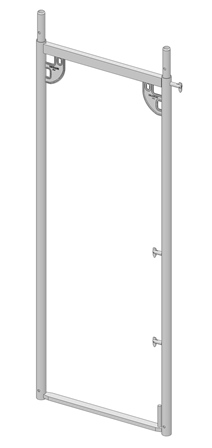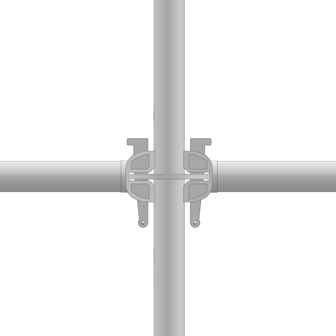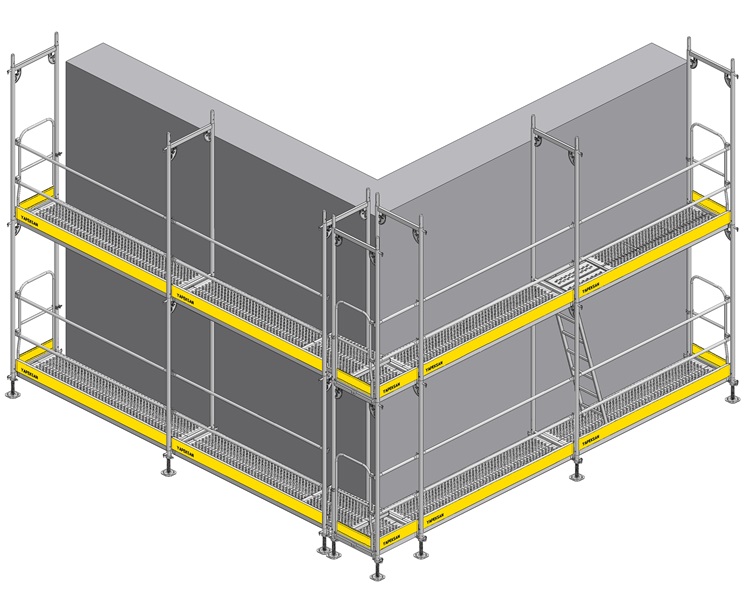
What is the Facade Scaffolding?
ABOUT THE FACADE SCAFFOLDINGScaffolding is a temporary structure that is used to support workers and materials while working at height or in hard-to-reach places. It is used in a variety of construction, maintenance, and repair applications. Scaffolding systems are designed and constructed to meet the requirements of European standards, such as EN 12810-1, EN 12810-2, EN 12811-1, and EN 12811-2. These standards specify the performance requirements, structural design, and general design for scaffolding systems.
Scaffolding systems must be properly installed and maintained in accordance with the manufacturer`s instructions and the applicable standards. This is important to ensure the safety of workers and materials.
Here are some safety tips for using scaffolding:
- Only use scaffolding that is in good condition. Check the scaffolding for any signs of damage before using it.
- Always wear personal protective equipment, such as a hard hat, safety glasses, and gloves, when working on scaffolding.
- Do not overload the scaffolding. Only use scaffolding for the purpose for which it was designed.
- Do not work on scaffolding alone. Always have someone with you in case of an emergency.
- By following these safety tips, you can help to ensure that scaffolding is used safely and effectively.
Here are some additional details about scaffolding systems:
- Scaffolding systems are typically made of metal or wood. Metal scaffolding is more durable than wood scaffolding.
- Scaffolding systems are typically anchored to the ground or to the building. This helps to prevent it from tipping over.
- Scaffolding systems must be properly installed and maintained. This is important to ensure their safety.
- Scaffolding systems are subject to regulations. These regulations help to ensure their safety.
Scaffolding systems are designed and constructed to meet the requirements of European standards, such as EN 12810-1, EN 12810-2, EN 12811-1, and EN 12811-2. Scaffolding systems must be properly installed and maintained in accordance with the manufacturer`s instructions and the applicable standards. These standards specify the performance requirements, structural design, and general design for scaffolding systems.
As Yapeksan Scaffolding, we have two different models that we produce for safe facade scaffolding needs.
- PANOMOD H Type (Frame Type) Safety Facade Scaffolding System
- FLAMOD Ringlock Type Safety Facade Scaffolding System
1. PANOMOD Frame Type Safety Facade Scaffolding System:
It is a frame type safety scaffolding system used in facade applications as facade scaffolding. In the Panomod scaffolding system, which has been highly developed in terms of occupational safety, measures to prevent possible occupational accidents have been maximized. Panomod is a frame type, also known as H Type scaffolding system. H Type scaffolding systems are a standard width model. Frame widths can be 70 cm and 100 cm standard width. Panomod H Type model scaffolding is more practical to assemble and its cost is cheaper than other models. It is a model widely used in square and rectangular building types with its quick installation feature and no angular deviations.

2. FLAMOD RingLock Type Safety Scaffolding System:
In many different structures such as residential, industrial, bridge and dam; It is a flanged type (wedge type scaffolding) safe scaffolding system that can be used as working scaffolding (volume scaffolding), facade scaffolding, stair tower and formwork scaffolding. Flanged Scaffolding System offers a flexible solution in applications with its design and wide product range. With the flanged scaffolding model, scaffolding can be installed in different widths from 50cm to 300cm. It can create advantages in projects with its ability to offer flexible solutions in different design structures such as square or circular.


 +90 212 423 3378
+90 212 423 3378



